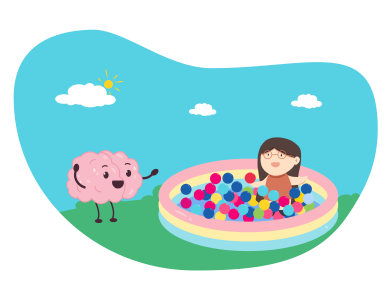Teachers can help students become self-regulated learners by helping them develop a strong sense of control in the classroom through metacognitive strategies.
Students who use metacognitive strategies become more reflective about the processes that influence their own learning. By understanding how they learn, students get more control over their education. In addition, it strengthens one’s ability to self-regulate and control one’s own learning motivation.
Metacognitive strategies include things like planning a course of study, choosing the best way to finish a task, judging one’s own performance, and keeping track of what one knows.
When teachers collaborate with students to create learning experiences in which students take real responsibility for their own education, they are able to:
- help students take charge of their education by helping them develop individual plans to meet their academic objectives.
- help students become more independent and self-reliant as they progress through their studies.
- Allow them to reflect on how well their education is serving them and how they can improve it in the future.
- Give students the chance to come up with evaluation methods and criteria that fit with what they want to learn.
Methods for Including Metacognitive Strategies in the Everyday Teaching Process
Some of the most prominent methods for implementing metacognitive strategies into regular lessons are:
Explicit Teaching
By emphasizing the use of existing knowledge, teaching new information and skills, demonstrating how to put them to use, and giving students plenty of time for individual practice and reflection.
Helping students set goals, track progress, and assess progress
By giving students clear instructions in these areas and setting up their work according to these stages, they can learn to use these strategies on their own and take charge of their own learning.
Construction of grading scales (and, wherever possible, co-designing them with students)
Help students keep track of their progress and come up with SMART (specific, measurable, attainable, realistic, and timely) personal learning goals.
Cognitive modeling
Describe in words how you evaluate, analyze, and resolve issues. Thinking out loud could be the answer to this problem.
Questioning
Teachers should view their students’ questions as valuable feedback and a chance to explain and dig deeper into a topic. Teachers can utilize them to engage their kids, monitor their development, and stimulate their minds.
Assess your metacognitive strategies and make changes if necessary
To evaluate your methods, think about the following:
- How can you include multiple metacognitive strategies into your daily routines and class plans, and openly teach them to your students?
- How can you help students evaluate how well they are learning and think about their own ways of solving problems?
- How can you help students set their own learning objectives, create their own learning plans, track their progress, and reflect on their progress?
- How much do your professional learning communities encourage and help people get better at metacognitive strategies?
Five Methods for Instructing Students to Make Use of Metacognition

1. Start by defining the term.
Our recommended definition is “thinking about your thinking as a means to higher learning.” Using a metaphor like “driving their minds” helps younger students, especially, grasp this concept more easily.
2. Emphasize the benefits
Initiate a discussion about metacognition by having students list the advantages of self-regulation and provide examples. If you’re having trouble starting an essay, maybe you should try making some notes beforehand to get the flow going or reviewing a reading portion to make sure you understand it. Before saying something that could potentially hurt someone else’s feelings, it’s best to stop and consider the consequences of your words.
3. Describe it in a natural way.
Observe students actively engaging in metacognitive activities, such as self-reflection on learning or classroom discussion of the concept. In both large and small settings, highlight the many situations in which this strategy will prove useful, such as in the classroom and beyond.
4. Elaborate on its value outside the classroom setting.
Guide group conversations in which students discuss real-world applications of metacognition skills. For instance, Reign asks her elementary school students to give examples of how their parents could benefit from learning metacognition in the workplace when she teaches this concept. Students in high school may consider how they might use metacognition in the workplace or in their personal lives.
5. Model metacognition.
Talking through solutions aloud is a great way to model metacognition and help children acquire higher-order thinking skills.
In Conclusion
A metacognitive student is able to reflect on their own cognitive processes. The term “reflection” might be used to describe this method. Using this method, they can inquire, “What exactly is the issue that needs fixing? Tell me what I should do to fix this. So, how am I doing? Just how well did I do? Where can I make improvements for the future? For the purpose of teaching metacognition to students of all ages, we came up with the metaphor of “driving your brain.”
In driver’s education, students learn when to slow down, when to speed up, and how to avoid making wrong turns. The same is true when teaching students to “drive their brains” and become self-directed learners.
Students who have developed strong metacognitive abilities are better able to take charge of their own learning and make progress in all areas of their lives. No matter what career path they choose, the students will benefit from the ability to think critically, speak clearly, work well with others, and solve issues in clever ways.







